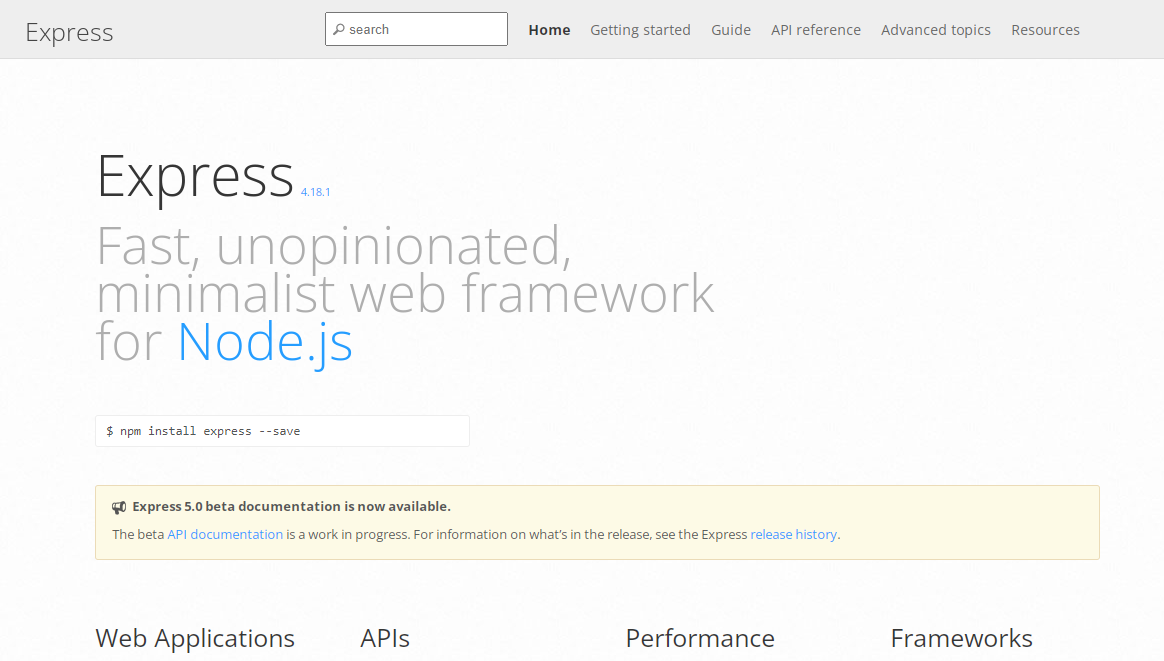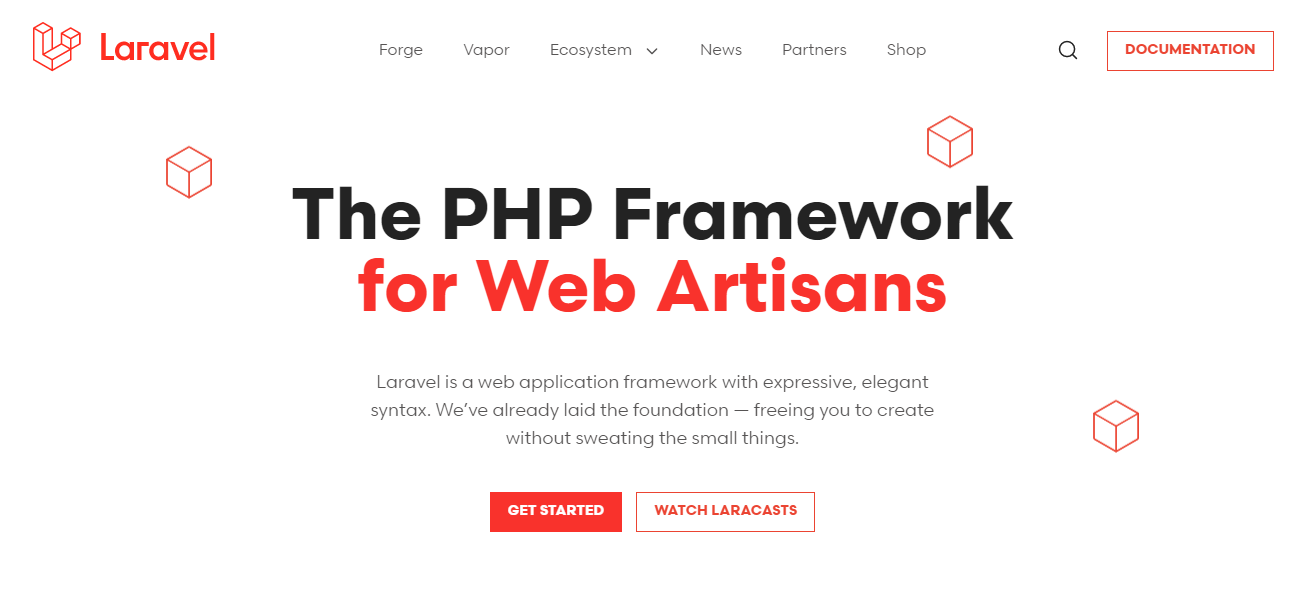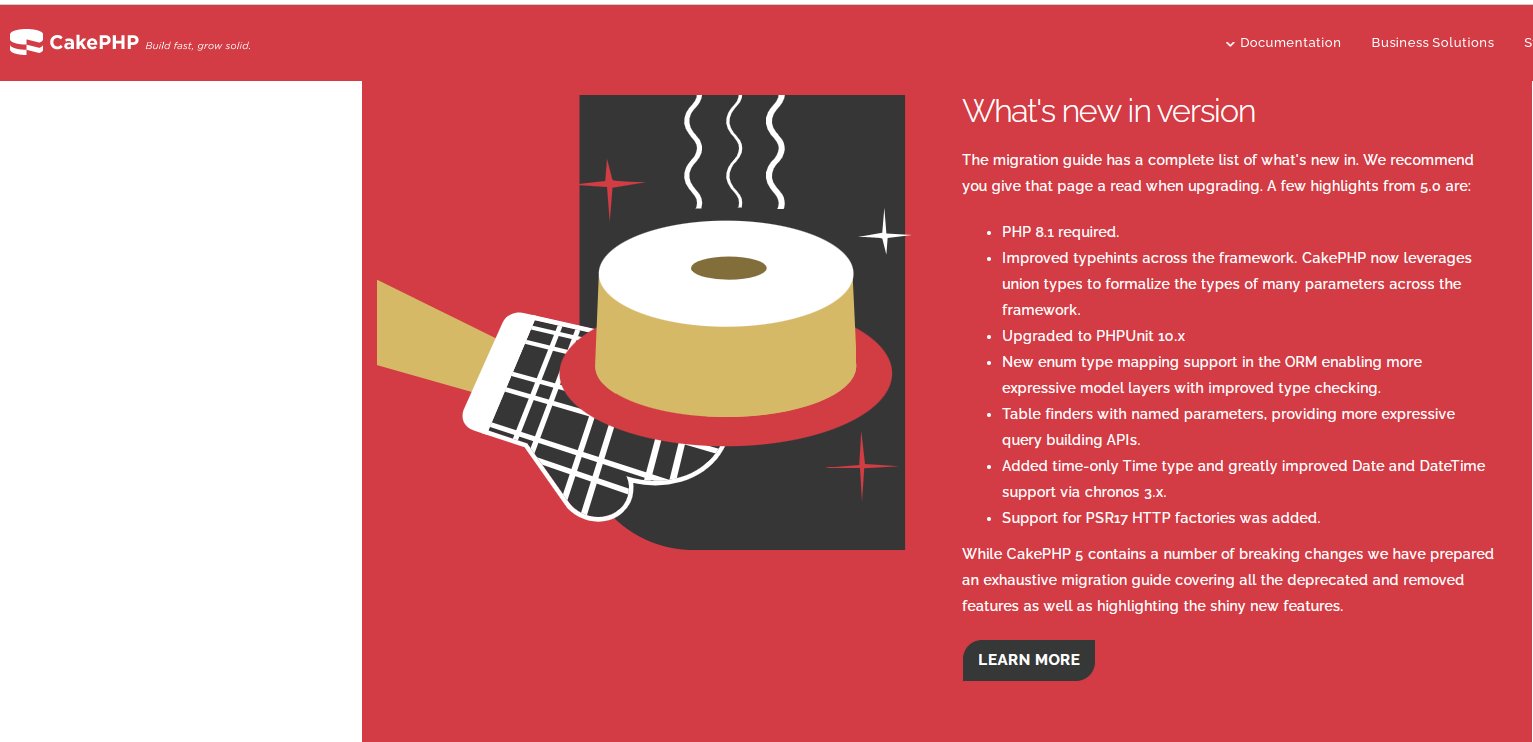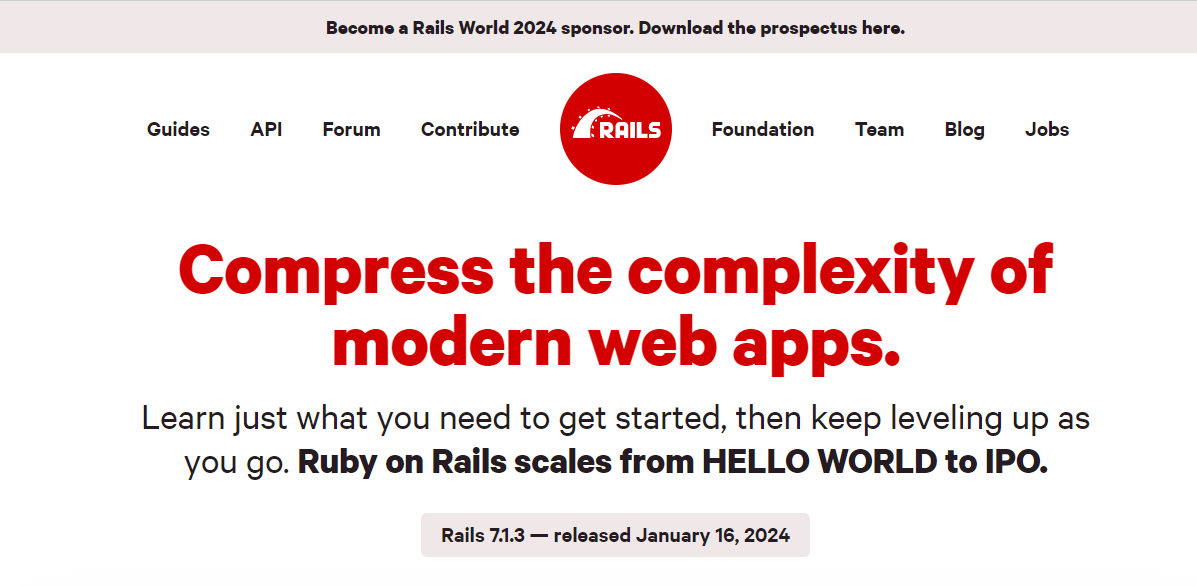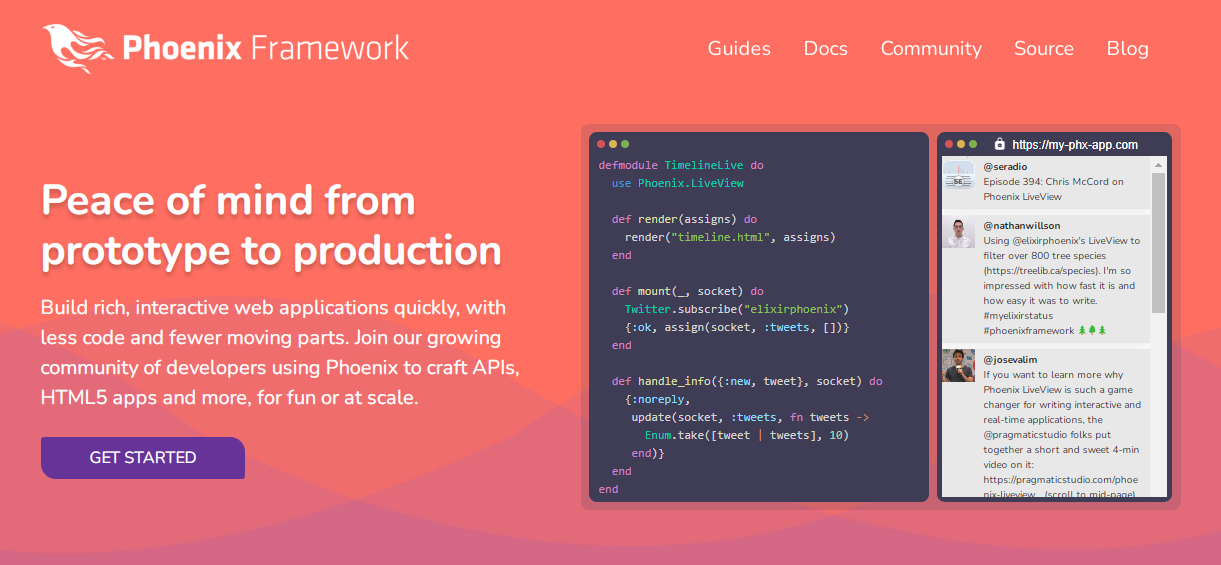Top 10 Backend Frameworks for Web Development in 2024

Backend frameworks play a pivotal role in the realm of web development. Without these frameworks, the creation and deployment of web applications would demand an immense investment of time and resources, significantly amplifying the intricacies of the development process.
These frameworks empower developers with essential tools and support, streamlining routine tasks such as server configuration, database management, and routing, among others.
By entrusting these responsibilities to the framework, developers can concentrate their efforts solely on the core business logic of the web application. This approach leads to a more expeditious development process and, ultimately, the delivery of a high-quality product.
Certain backend frameworks have garnered more widespread acclaim than others:
- Node.js stands out as one of the most extensively utilized backend frameworks among web developers, boasting over 1 billion downloads.
- As of January 2023, the highest-rated backend frameworks, according to user votes, included Laravel with 71,903 repository stars, Django with 67,941, and Spring with 64,405.
- Node.js is the preference for 47.12% of developers globally, closely followed by React.js (42.62%) and jQuery (28.57%).
This article will delve into the top 10 backend frameworks for 2024, exploring their features and key advantages. Let’s delve into the details!
Read more: Exploring Back-End & Web Development Trends For 2024
What is a Back-end Framework?
Back-end frameworks are software frameworks that provide a foundation for building the server-side of a web application. The back-end of a web application is responsible for managing and processing data, handling business logic, and interacting with databases. Back-end frameworks simplify and streamline the development process by providing pre-built modules, libraries, and tools that developers can use to build robust and scalable server-side applications.
Key characteristics of back-end frameworks include:
- Server-Side Logic: Back-end frameworks facilitate the implementation of server-side logic, including handling requests from clients, processing data, and generating responses.
- Database Interaction: They often include features for interacting with databases, making it easier to perform operations like querying, inserting, updating, and deleting data.
- Security: Many back-end frameworks come with built-in security features to help developers guard against common web vulnerabilities such as SQL injection, cross-site scripting (XSS), and cross-site request forgery (CSRF).
- Routing and URL Handling: Frameworks typically provide a routing mechanism to map URLs to specific functions or controllers, making it easy to define how different parts of the application respond to incoming requests.
- Middleware Support: Middleware allows developers to inject code that executes before or after the core processing of a request. This is useful for tasks like authentication, logging, or input validation.
- Template Engines: Some frameworks include template engines to simplify the process of generating dynamic HTML or other markup languages.
Benefits of Using a Back-end Framework
Using a backend framework provides several benefits for web development, making the process more efficient, scalable, and maintainable. Here are some top-notch benefits:
- Rapid Development: Backend frameworks come with pre-built modules, libraries, and tools that streamline the development process. Developers can leverage these components to quickly build robust and functional applications without having to start from scratch.
- Code Reusability: Frameworks promote code organization and modularization, allowing developers to reuse code snippets, components, and modules across different parts of the application. This not only speeds up development but also enhances code maintainability.
- Scalability: Backend frameworks are designed with scalability in mind, enabling applications to handle increased traffic and data loads. Many frameworks provide features like load balancing, database connection pooling, and caching mechanisms to ensure optimal performance as the application grows.
- Security Features: Frameworks often come with built-in security features and best practices to help developers protect their applications against common vulnerabilities. These features include data validation, encryption, authentication, and authorization mechanisms, making it easier to build secure applications.
- ORM (Object-Relational Mapping): Many backend frameworks come with built-in or easily integrated ORM systems. ORM simplifies database interactions by allowing developers to work with objects instead of raw SQL queries. This abstraction makes it easier to manage databases and reduces the likelihood of SQL injection attacks.
- MVC Architecture: Most backend frameworks follow the Model-View-Controller (MVC) architecture, separating the application logic into three interconnected components. This separation of concerns enhances code maintainability, as changes in one component do not necessarily affect the others.
- Testing Support: Frameworks often provide tools and utilities for automated testing. This facilitates the implementation of unit tests, integration tests, and other testing practices, ensuring the reliability and stability of the application.
- Community Support: Popular backend frameworks usually have large and active developer communities. This means that developers can find support, documentation, and a wealth of resources online. Community support is invaluable for problem-solving, getting advice, and staying updated with the latest best practices
Top 10 Popular Back-End Framework in 2024
1. Node.js
Node.js is a server-side JavaScript runtime built on the V8 JavaScript engine. It allows developers to execute JavaScript code on the server, enabling the development of scalable and high-performance web applications. Node.js is event-driven and designed to be non-blocking, making it efficient for handling concurrent connections and real-time applications.
Key Features of Node.js
- Event-Driven Architecture: Node.js uses an event-driven architecture that allows developers to build scalable and responsive applications.
- npm (Node Package Manager): npm is a package manager for Node.js, providing a vast repository of reusable packages and modules that simplify development.
- V8 JavaScript Engine: Node.js is built on the V8 JavaScript engine, developed by Google, which compiles JavaScript to native machine code, ensuring high performance.
- Cross-Platform: Node.js is cross-platform, meaning it can run on various operating systems, including Windows, macOS, and Linux, providing flexibility for developers.
- Streaming: Node.js supports streaming data, allowing for efficient processing of large datasets.
- Community-Driven: Node.js has a large and active community that contributes to its continuous improvement. This community support ensures a wealth of resources, tutorials, and third-party modules.
Pros of Node.js
- The ability to use JavaScript for both server-side and client-side development streamlines the development process, promoting code reuse and consistency.
- Node.js is known for its fast execution speed due to the V8 engine. It is particularly effective for handling I/O-bound operations and real-time applications.
- It is designed to handle a large number of concurrent connections, making it scalable for applications that require high throughput.
- Node.js has a vibrant and extensive ecosystem of packages and modules available through npm (Node Package Manager), facilitating rapid development and code reuse.
- Node.js uses an event-driven, non-blocking I/O model, allowing it to handle multiple operations simultaneously without waiting for one to complete before starting another.
- It is well-suited for building real-time applications, such as chat applications and online gaming platforms, due to its event-driven architecture.
Cons of Node.js
- Asynchronous programming using callbacks can sometimes lead to “Callback Hell” or nested callbacks, making the code harder to read and maintain. However, this can be mitigated with proper design patterns or using features like Promises and async/await.
- While Node.js excels in handling I/O-bound tasks, it may not be the best choice for CPU-intensive tasks due to its single-threaded event loop.
- In comparison to some other backend technologies, Node.js might be considered less mature for large enterprise solutions. However, its adoption is growing rapidly in enterprise environments.
2. Express.js
Express.js is a fast, lightweight, and flexible web application framework designed for Node.js. As a server-side framework, it simplifies the development of web and mobile applications by providing a set of powerful features and tools. Express.js is widely used for building APIs and dynamic web pages, offering a streamlined approach to handling HTTP requests and responses.
Key Features of Express.js:
- Middleware: Express.js shines with its middleware architecture, allowing users to seamlessly incorporate custom functions or plugins into the application pipeline. This feature enables efficient request and response management, facilitating the addition of authentication, compression, and other functionalities to applications.
- Routing: Express.js boasts a robust routing system, facilitating the straightforward mapping of HTTP requests to specific controllers or functions. This capability empowers the creation of dynamic web applications responsive to user input in real-time.
- Error Handling: The framework provides a robust error-handling system, empowering developers to gracefully catch and manage errors. This feature enhances the debugging and troubleshooting process, ensuring a smoother end-user experience.
- Template Engines: Express.js supports popular templating languages like Pug, EJS, and Handlebars. This support simplifies the creation of dynamic web pages that can be updated in real-time without requiring a complete page refresh.
- HTTP Utility Methods: Express.js provides utility methods for handling HTTP requests and responses, simplifying common tasks like sending JSON responses or setting status codes.
- Static File Serving: Express.js makes it simple to serve static files, such as images, stylesheets, and scripts, using its built-in middleware.
- Scalability: Express.js is renowned for its scalability and performance, making it an excellent choice for building large-scale web applications. Its modular architecture allows developers to flexibly add or remove features, while its lightweight design ensures efficient handling of high traffic and data loads.
Pros of Express.js
- Being a popular framework of Node.js, ExpressJS enjoys robust community support, making it easy to find assistance online.
- Offers a potent routing module, facilitating the creation of complex routes for web applications.
- Supports middleware, allowing seamless integration with third-party libraries.
- Provides an effortless way to manage requests and responses between servers using a RESTful API.
- Flexibility and customization options enable developers to craft clean and efficient code.
- Equipped with a robust toolset for error handling and debugging, enhancing the manageability of the development process.
Cons of Express.js
- Tailored for backend development, ExpressJS is not intended for building rich user interfaces or interactive client-side components.
- Requires developers to have a good understanding of Node.js before delving into the framework.
- Faces security issues, such as cross-site scripting (XSS) and injection attacks, necessitating developers to address them independently.
- Lacks a built-in Object-Relational Mapping (ORM) system, requiring developers to rely on third-party libraries for database management.
3. Django
Django is an open-source web framework for building web applications using the Python programming language. It was created in 2005 and has since gained widespread popularity due to its emphasis on simplicity, speed, and adherence to the Don’t Repeat Yourself (DRY) principle. Django follows the Model-View-Controller (MVC) architectural pattern, although it’s often referred to as MTV (Model-Template-View) to reflect its slightly different structure.
Key Features of Django
- ORM (Object-Relational Mapping) and Database Abstraction: The Django ORM simplifies database interactions by allowing developers to work with Python objects instead of SQL queries. It supports multiple databases and provides an abstraction layer for easy database management.
- Admin Interface: The built-in administrative interface streamlines the process of managing application data, offering an intuitive dashboard without the need for additional coding.
- MTV Architecture: Django follows the Model-View-Template (MVT) architecture, which is similar to the Model-View-Controller (MVC) pattern. This architectural approach separates concerns and enhances code organization.
- URL Handling: Django provides a flexible URL routing system, enabling the creation of human-readable URLs mapped to corresponding views. This enhances user navigation and aids in SEO-friendly URL creation.
- Built-in Security Features: Django emphasizes security best practices, offering protection against common web vulnerabilities like SQL injection, cross-site scripting (XSS), and cross-site request forgery (CSRF). It includes built-in tools for secure password hashing and prevention of clickjacking
- Scalability: Django supports various methods for scaling applications, including an automatic caching mechanism and the ability to deploy on multiple servers for handling large-scale web applications.
Pros of Django
- Django encourages rapid development by providing built-in features like an Object-Relational Mapping (ORM) system for database interaction and an admin interface for managing application data without extensive coding.
- Django follows the DRY principle, reducing redundancy in code. Developers can write code once and reuse it, leading to cleaner and more maintainable applications.
- It boasts a large and active community. This community contributes to ongoing development, provides support, and shares knowledge through forums, documentation, and tutorials.
- Django is highly scalable and can handle heavy traffic loads. It includes mechanisms for caching to optimize response times and supports horizontal scaling by deploying applications on multiple servers.
Cons of Django
- Django’s opinionated structure may limit the flexibility for developers who prefer more control over their code architecture. It enforces a specific way of organizing code, which may not be suitable for highly customized applications.
- Beginners might find Django’s learning curve to be steep, especially if they are new to web development. However, the extensive documentation and community support help ease the learning process.
- While Django is known for its speed in development, it may not be as performant as some other web frameworks in certain scenarios. Performance could be a consideration for applications with extremely high demand.
Read more: Django vs Ruby on Rails – Which is the better?
4. ASP.NET CORE
ASP.NET Core is a free, open-source, and cross-platform web framework developed by Microsoft. It is a modern, modular, and high-performance framework designed to build cloud-based, internet-connected applications. ASP.NET Core is a significant evolution from the traditional ASP.NET framework, bringing a range of improvements and new features.
Key Features of ASP.NET Core
- Cross-Platform Compatibility: ASP.NET Core is designed to run on multiple platforms, including Windows, Linux, and macOS. This cross-platform support allows developers to choose their preferred development environment.
- Modular and Lightweight: ASP.NET Core is modular and lightweight, allowing developers to include only the components needed for their application. This results in more efficient and faster applications with reduced overhead.
- High Performance: ASP.NET Core is optimized for high performance, providing faster response times and improved scalability. Its modular architecture and the use of the Kestrel web server contribute to enhanced performance.
- Unified MVC and Web API Framework: ASP.NET Core unifies the Model-View-Controller (MVC) and Web API frameworks, simplifying the development of both web pages and web services. This integration streamlines the building of modern, data-driven applications.
- .NET Core Runtime: ASP.NET Core is built on top of the .NET Core runtime, which is a free, open-source, and cross-platform runtime environment. This enables developers to build applications that can run on various operating systems.
- Dependency Injection: ASP.NET Core includes a built-in, lightweight dependency injection framework, making it easier to manage and inject dependencies into application components. This promotes a more modular and testable codebase.
- Razor Pages: Razor Pages is a lightweight web application framework included in ASP.NET Core that allows developers to build page-focused scenarios with less ceremony than traditional MVC.
- Open-Source and Community-Driven: Being open-source, ASP.NET Core benefits from community contributions, feedback, and continuous improvement. The community actively participates in the development, enhancing the framework’s features and addressing issues.
5. Laravel
Laravel is a popular open-source PHP web framework designed for building modern and scalable web applications. Developed with a focus on elegance, simplicity, and developer productivity, Laravel has gained widespread recognition in the web development community. It follows the Model-View-Controller (MVC) architectural pattern and incorporates various features that streamline common tasks, making it an ideal choice for developers.
Key Features of Laravel
- Easy Routing: Laravel provides a simple and efficient routing system, enabling developers to define routes with minimal effort and take advantage of built-in route caching for improved performance.
- Database Migration: Laravel’s powerful migration system allows developers to manage database schema changes using PHP code, simplifying the process of updating the database structure.
- Blade Template Engine: Laravel uses the Blade template engine, offering features such as template inheritance, sections, and layouts. Blade enhances code reusability and minimizes duplication.
- Eloquent ORM: Laravel’s Eloquent ORM facilitates database interactions using an object-oriented approach, making it easy to connect with various data sources and perform common operations.
- Authentication and Security: Laravel includes a user-friendly authentication system with customizable features. The framework also prioritizes security, offering encrypted sessions, bcrypt password hashing, and APIs for two-factor authentication and password resets.
Pros of Laravel
- Laravel’s open-source, modular design allows flexible and scalable application development.
- It follows the MVC pattern for clean, organized, and maintainable code.
- The Artisan command-line interface streamlines tasks for enhanced productivity.
- Eloquent, an ORM system, and migration tools simplify database interaction.
- Laravel’s built-in authentication system customizes user processes, supporting OAuth and LDAP authentication.
Cons of Laravel
- Some developers may find the development process in Laravel to be slower compared to certain backend frameworks.
- While powerful, Laravel may have less built-in support compared to some competitors, requiring the use of third-party tools in certain scenarios.
- Updates in Laravel can be ambiguous, potentially leading to compatibility issues or security concerns. Care is needed when integrating new updates.
6. Flask
Flask is a lightweight and microweb framework written in Python. It is designed to be simple, flexible, and easy to use, providing the essential tools for building web applications without imposing rigid structures or dependencies. Flask follows the WSGI (Web Server Gateway Interface) standard and is known for its minimalistic approach, allowing developers to choose and integrate components as needed.
Key Features of Flask
- Routing: Flask provides a simple and expressive routing system for defining URL patterns and mapping them to view functions.
- Jinja2 Templating Engine: Flask uses the Jinja2 templating engine, enabling the creation of dynamic and reusable HTML templates.
- Werkzeug Library: Built on the Werkzeug library, Flask leverages essential utilities for handling HTTP requests, responses, and other web-related tasks.
- Modularity: Flask is modular, allowing developers to choose and use components as needed. This modular design promotes flexibility and simplicity.
- Development Server: Flask comes with a built-in development server, making it easy for developers to test and iterate during the development phase.
- Extensions: Flask has a wide range of extensions available, allowing developers to easily add features such as authentication, database integration, and form handling.
Pros of Flask
- Lightweight, simple, and easy to use.
- Provides essential tools without enforcing specific libraries or tools
- Quick setup, demanding minimal time and resources for application initiation
- Highly customizable, enabling developers to tailor applications to specific requirements
- Offers flexibility, and scalability, and seamlessly integrates with a variety of libraries and tools
- Accommodates third-party extensions without compromising performance
- Accessible, comprehensive documentation offering detailed guidance for framework utilization
- Facilitates swift learning, allowing developers to promptly build robust web applications.
Cons of Flask
- As a micro-framework, Flask lacks certain features typical in full-stack frameworks
- Key functionalities like user authentication, authorization, and access control are absent
- Developers must turn to third-party libraries to implement these features
- This can elevate application complexity, introducing an additional layer of administration and security.
7. Spring Boot
Spring Boot is an open-source, Java-based framework that simplifies the process of building production-ready, stand-alone, and highly scalable applications. Developed by the Spring team at Pivotal (now VMware), Spring Boot is built on top of the Spring framework and is designed to streamline the configuration and development of Spring applications. It follows the convention over configuration and opinionated default principles, allowing developers to focus more on application logic and less on boilerplate code.
Key Features of Spring Boot
- Embedded Server Support: Spring Boot supports embedded servers like Tomcat, Jetty, and Undertow, simplifying deployment and eliminating the need for external server configurations.
- Auto-Configuration: Spring Boot’s auto-configuration feature automatically configures the application based on the project’s dependencies, reducing manual configuration efforts.
- Starter Templates: Spring Boot offers a variety of starter templates for different types of applications, providing a quick and standardized way to set up projects.
- Actuator for Monitoring: Spring Boot Actuator provides production-ready features for monitoring and managing applications, including health checks, metrics, and environment information.
- Microservices Support: Spring Boot is well-suited for building microservices-based architectures, with features for service registration, discovery, and distributed systems using Spring Cloud.
- Integrated Spring Ecosystem: Spring Boot seamlessly integrates with the broader Spring ecosystem, allowing developers to leverage the features of the Spring Framework, Spring Data, Spring Security, and more.
- Opinionated Defaults: Spring Boot follows opinionated defaults and conventions, reducing the need for extensive configuration and promoting consistency across projects.
Pros of Spring Boot
- Spring Boot significantly speeds up the development process by providing default configurations and sensible defaults
- Auto-configuration streamlines the process, automatically setting up necessary dependencies and saving developers time.
- Simplifies deployment with embedded servers, allowing packaging of applications as executable JAR or WAR files.
- Reduces decision-making by providing defaults and conventions, streamlining the application-building process.
- Easily integrates with popular libraries and frameworks like Hibernate, Kafka, and Spring Data.
Cons of SpringBoot
- Built on the Spring framework, SpringBoot may introduce additional complexity for developers new to Spring.
- The opinionated approach, while time-saving, may limit flexibility in design choices.
- Requires a steep learning curve, with a solid understanding of the Spring framework essential for effective SpringBoot utilization.
8. CakePHP
CakePHP stands out as a widely embraced open-source web framework for constructing robust and scalable web applications. Crafted in PHP, it adheres to the Model-View-Controller (MVC) architectural pattern, effectively compartmentalizing application logic, presentation, and data processing.
Under the MIT license, CakePHP is freely available for developers to leverage in the creation of web applications. Drawing inspiration from Ruby on Rails principles, CakePHP integrates fundamental software design and engineering concepts such as the front controller, active record, data mapping, and convention over configuration.
Renowned for its robust capabilities, including scaffolding, baking, and security measures, CakePHP ranks among the most utilized backend frameworks. Developers favor it for its expeditious and secure approach to web development.
Key Features of CakePHP
- Routing is empowered by CakePHP’s robust system, allowing developers to define custom URLs, enhancing user-friendliness and SEO optimization.
- Built-in caching support is a noteworthy feature, improving application performance by storing frequently accessed data in memory or disk to minimize database queries.
- A built-in templating engine enables developers to define templates, enhancing application manageability, facilitating easier maintenance, and simplifying the design process.
- Embracing community-driven development, CakePHP thrives on active maintenance and updates by a sizable team of developers, ensuring continuous evolution and regular addition of new features and improvements.
Pros of CakePHP
- The MVC Architecture facilitates the separation of applications into three distinct components, enhancing ease of maintenance and scalability.
- Object-Relational Mapping (ORM) empowers developers to interact with databases through PHP code, streamlining the development process with speed and reduced error susceptibility.
- The code generation tool automates CRUD operations for database tables, resulting in substantial time and effort savings.
- Built-in tools and plugins cater to authentication, authorization, and security needs, fortifying the application against threats like CSRF and ensuring user privacy.
Cons of CakePHP
- A notable learning curve, particularly for newcomers unacquainted with MVC architecture or ORM systems.
- Performance may lag behind other web application frameworks, especially when handling extensive datasets or complex applications, impacting overall efficiency and scalability.
- Finding assistance for bugs or issues can be challenging due to the framework’s less extensive and reliable customer service compared to other frameworks.
9. Ruby on Rails
Ruby on Rails, often referred to simply as Rails, stands as a web application framework constructed upon the Ruby programming language.
With its robust suite of tools, this framework empowers developers to construct contemporary and scalable web applications. Emphasizing user-friendly practices, Rails provides default solutions for common issues, allowing developers to concentrate on tailoring features to their application’s specific requirements.
Additionally, the platform advocates for the utilization of industry-standard technologies like CSS, HTML, JavaScript, and JSON. It adheres to software engineering patterns such as DRY (Don’t Repeat Yourself) and COC (Convention over Configuration), streamlining development and ensuring the creation of high-quality code.
Rails finds applications across a spectrum, from small personal projects to extensive enterprise-level applications. Some developers hail it as the top-performing web framework, solidifying its status as one of the most favored backend frameworks for web development.
For deeper insights into deploying a Ruby on Rails application and leveraging a serverless architecture, the tutorial “Deploying a Ruby on Rails application” provides valuable information.
Features of Ruby On Rails
- Model-View-Controller (MVC) Architecture: Rails adheres to the MVC pattern, facilitating the separation of a web application’s code into distinct parts: model (database), views (user interface), and controller (business logic).
- Convention over Configuration (CoC): Rails makes assumptions about code structure, saving time and effort during development.
- Scaffolding: Developers can swiftly generate code for basic CRUD (Create, Read, Update, Delete) functionality using Rails scaffolding.
- Active Record: Rails features Active Record, an object-relational mapping (ORM) tool simplifying database interactions using Ruby code.
- Testing Framework: Rails incorporates built-in testing functions, including unit tests and system tests, ensuring code function s as intended.
- Security Features: Rails boasts built-in security measures, safeguarding against cross-site scripting (XSS) and cross-site request forgery (CSRF) attacks.
Advantages of Ruby On Rails
- Rails boasts an array of tools facilitating the easy and efficient construction of web applications.
- Well-suited for agile development methodologies, Rails offers a modular architecture allowing for convenient modification of functionality.
- A large and dynamic community supports Ruby on Rails, providing abundant resources and tools for learning and troubleshooting.
- Designed with scalability in mind, Rails allows for the seamless addition of new functionality and easy scalability.
- Rails includes built-in testing functions, simplifying the testing process and ensuring functional code.
Limitations of Ruby On Rails
- While excelling in rapid development, Rails may exhibit slower performance compared to other frameworks.
- For those unfamiliar with the framework, Ruby on Rails can present a steep learning curve.
- Updates to one part of the Rails framework might cause compatibility issues with other parts, particularly when using older versions.
Read more: Ruby on Rails vs Node.js: What is the best?
10. Phoenix
Phoenix is a contemporary web framework crafted in Elixir, a high-performance and scalable programming language, to simplify and expedite the development and deployment of web applications.
Taking inspiration from renowned web frameworks like Ruby on Rails and Django, Phoenix stands out by offering distinctive advantages that cater to the needs of developers.
Features of Phoenix
- Fast and Scalable: Phoenix excels in performance and scalability, utilizing lightweight processes and advanced caching mechanisms.
- Real-Time Functionality: Out-of-the-box real-time functionality is provided through Phoenix’s Channels, facilitating bidirectional communication between clients and servers via WebSockets.
- User-Friendly: Phoenix prioritizes productivity with a clear and concise syntax, minimizing boilerplate code and enhancing development simplicity.
- Modern Web Technologies: Leveraging cutting-edge web technologies like Elixir, Erlang’s VM, and JavaScript frameworks (React or Vue), Phoenix constructs robust and interactive web applications.
- Security by Design: Phoenix incorporates security features such as CSRF protection, input validation, and session management, ensuring application security without compromising performance or usability.
Pros of Phoenix
- Phoenix is built on the Elixir programming language, renowned for its speed and scalability.
- Leveraging the Erlang virtual machine ensures Phoenix is highly reliable and fault-tolerant.
- Phoenix facilitates the development of real-time applications with its built-in support for web sockets.
- Despite handling a large number of concurrent connections, Phoenix maintains a low memory footprint, ensuring optimal performance.
- Phoenix comes equipped with a dedicated built-in testing framework, simplifying the writing and execution of tests.
- By harnessing the power of the OTP (Open Telecom Platform) library, Phoenix provides robust asynchronous processing capabilities.
Cons of Phoenix
- While offering some client-side functionality through Phoenix LiveView, it may not match the robustness of dedicated client-side frameworks like React or Vue.js.
- Developers new to functional programming or the Erlang VM may find it challenging to learn Phoenix due to its relatively new technology.
- Phoenix, being a niche technology, might have fewer third-party libraries or packages compared to more established frameworks like Ruby on Rails or Django.
- Developers accustomed to object-oriented programming languages may initially find the functional programming paradigm of Elixir and Phoenix challenging.
Conclusion
The landscape of backend frameworks in 2024 is diverse and caters to the evolving needs of web development. Whether you prioritize simplicity, performance, or language preference, these top 10 backend frameworks provide a solid foundation for building cutting-edge web applications. As you embark on your web development journey, consider the unique features and strengths of each framework to choose the one that aligns best with your project goals. Also, factor in the hosting strategy for your backend application once it’s developed.
However, don’t stop there—take your project to new heights by consulting with an experienced software expert who can provide valuable insights and guidance. Contact us today to elevate your project with our software development services. The sky’s the limit—let’s build together!
Read more: Top 10 Mobile App Development Frameworks

